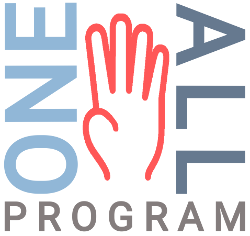A brief introduction of myself. In 1992, I received my diploma from the Scuola Superiore per Interpreti e Traduttori of Rome, Italy (English<>Italian – French<>Italian). Five years of intensive courses from technical and literary translation to consecutive and simultaneous interpretation in all the major fields.
I moved to the U.S. in 2004, and since then, I found myself navigating different waters in comparison with the European market.
To this day, I am still learning the ins and outs of our profession, especially for what concerns various fields of expertise (different than mine) and different states throughout the country.
Who hires us (in best-to-worse order):
- in-person
- Direct Clients
- Local Agencies
- National and International Agencies/companies
- Remotely
- Your Direct Clients
- Local, National and International Agencies/Companies
- Big Companies (LanguageLine, Cyracom, etc.)
- In-person with direct clients.
This is by far the best category for us…and for them. Why? Because they will spend much more going through an agency. We can charge our full rates, and they pay less regardless. Furthermore, in some circumstances, they will allow you to work remotely without changing the rates. It’s a win-win situation.
- In-person with local agencies.
You can put your foot down and demand the same rates direct clients pay you. You will probably receive fewer assignments because they will start by calling the interpreter with the lowest rates working their way up to you. Agencies usually keep a profit margin ranging between 40% to a staggering 75%.
- In-person with national and international agencies/companies.
Same as above.
- Remotely with your direct clients.
As stated in point 1 above, in some circumstances, your direct clients will allow you to work remotely without changing the rates
- Remotely with national and international agencies/companies.
Here is where the dynamics start changing for the worse. These entities typically offer you a per-minute rate. Clients are also charged the same way. You will have to fight tooth and nail for a decent rate, and once you come to an agreement, you will end up last in the list of interpreters they will call for an assignment. They will keep you in their database because they know you are highly qualified, but they will use you only if they have no choice. Rates can range from an outrageous $030/minute to $0.50, maybe $0.55 or $0.60 if you fight for it.
- Remotely with Big Companies (LanguageLine, Cyracom, etc.)
The worse. These companies do not care if you are a professional interpreter or not. They offer full-time and part-time positions, as well as 1099 (per-minute). Recently, a colleague of mine tried to apply, and when selecting $16 +/hour (the highest option in their application), she saw a pop-up window saying, “would you like to reconsider?”. She had to pick $15/h (2nd best) to be able to continue her application, and she never heard back from them. These companies rely the most on massive call centers abroad that charge them pennies. Because they have a monopoly on the most significant contracts out there (government, hospitals, banks, etc.), they couldn’t care less about your experience nor your certifications. They use the contractors only in situations where the call volume is particularly high, and they need back up.
Medical vs. Legal
For medical interpreters is much more difficult to find direct clients unless they are lucky enough to be hired for a full-time position in a hospital (only Spanish). Other than that, freelancers are usually paid a minimum of 2 hours + mileage, and they work through agencies of the type described in point 2 above. Because of the high demand and the high number of freelancers (especially in big cities), the hourly rates are low: they can range from $19/h to maybe $25 (depending on the language). Most of them, especially if the household has only one income, will have to reach out to agencies and companies like the ones described in points 5 and 6.
Recently, I am learning more about the legal field. Most legal/court interpreters are hired directly by the court, and their minimum is 3/4 hours. They charge half a day or a full day. Sometimes they are asked to work from home for the same rates. In order to work for more counties or even different states, they may go through local agencies, but the rates are usually not affected. Because of the amount of work available, especially for Spanish, they rarely have to reach out to entities that offer remote interpretation (points 5 and 6 above). If they do, it is for personal reasons, usually involving the need for working from home.
COVID-19
For obvious reasons, due to the current situation, remote interpretation went from being an auxiliary service (a plan B) to becoming a necessity. So here is what is happening now:
- Some agencies/companies (points 5 and 6) are offering lower rates than usual, trying to take advantage of the situation.
- A lot of interpreters in the legal/court field are discovering a new world they had no idea existed (even though it started in the 90s): the per-minute, with no minimum.
inLingo
As an Italian interpreter, I charge $85/h for consecutive, $120/h for simultaneous, 3 hours minimum, and I add $35 per hour for overtime, etc. I receive very few assignments due to my language pair. I’m a single mom, and obviously, I had to explore the remote interpretation world a long time ago to make ends meet. Needless to say, I was disgusted but powerless. Until I decided to take matters in my own hands. That’s how inLingo was born.
inLingo represents a better option for those who could only choose between point 5 and point 6.
I am struggling with calling it an agency because of the negative connotations that the term has represented for me and many others throughout the years.
Please, take the time to visit the website or reach out to me to learn more.
Alessandra Campana











